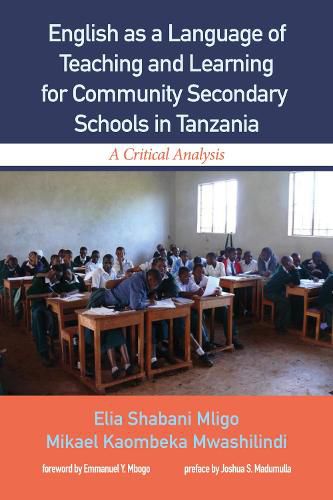Readings Newsletter
Become a Readings Member to make your shopping experience even easier.
Sign in or sign up for free!
You’re not far away from qualifying for FREE standard shipping within Australia
You’ve qualified for FREE standard shipping within Australia
The cart is loading…






This title is printed to order. This book may have been self-published. If so, we cannot guarantee the quality of the content. In the main most books will have gone through the editing process however some may not. We therefore suggest that you be aware of this before ordering this book. If in doubt check either the author or publisher’s details as we are unable to accept any returns unless they are faulty. Please contact us if you have any questions.
This book examines the challenges posed by English, a foreign language, as a language of teaching and learning for community secondary schools in Tanzania in terms of academic performance. The book probes the necessity for having two languages of instruction in the Tanzanian educational system. While Kiswahili, the native language, is predominantly understood by the majority of people, the discussion in this book indicates that most students in community secondary schools in Tanzania are incompetent in understanding, writing, listening, reading, and speaking English, a language they use in learning and doing their examinations, especially in the early stages of their secondary studies. The incompetence in the above-mentioned skills is mostly caused by their inability to cope with the abrupt transition in the languages of instruction from their pre-primary and primary school study [Kiswahili] to secondary school study [English]. Moreover, most teachers are unable to use the English language as a means to impart knowledge or facilitate learning to their students, leading them to code-switching and code-mixing. This book poses a challenge to countries whose students pass through a transition from one language of instruction to another in their educational systems, helping them to make appropriate decisions in regard to the appropriate language of teaching and learning.
$9.00 standard shipping within Australia
FREE standard shipping within Australia for orders over $100.00
Express & International shipping calculated at checkout
This title is printed to order. This book may have been self-published. If so, we cannot guarantee the quality of the content. In the main most books will have gone through the editing process however some may not. We therefore suggest that you be aware of this before ordering this book. If in doubt check either the author or publisher’s details as we are unable to accept any returns unless they are faulty. Please contact us if you have any questions.
This book examines the challenges posed by English, a foreign language, as a language of teaching and learning for community secondary schools in Tanzania in terms of academic performance. The book probes the necessity for having two languages of instruction in the Tanzanian educational system. While Kiswahili, the native language, is predominantly understood by the majority of people, the discussion in this book indicates that most students in community secondary schools in Tanzania are incompetent in understanding, writing, listening, reading, and speaking English, a language they use in learning and doing their examinations, especially in the early stages of their secondary studies. The incompetence in the above-mentioned skills is mostly caused by their inability to cope with the abrupt transition in the languages of instruction from their pre-primary and primary school study [Kiswahili] to secondary school study [English]. Moreover, most teachers are unable to use the English language as a means to impart knowledge or facilitate learning to their students, leading them to code-switching and code-mixing. This book poses a challenge to countries whose students pass through a transition from one language of instruction to another in their educational systems, helping them to make appropriate decisions in regard to the appropriate language of teaching and learning.